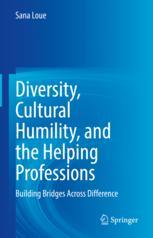Categories have been distinguished from groups and classes. Jenkins (2003) has argued that the formation of groups and classes is rooted in the processes of internal definition, by which individuals signal to others both inside and outside of their group their self-definition of identity. These internal definitions and designations may be critical because such distinctions establish their own position within a group and signal their group membership to others. As an example, how an individual classifies him- or herself with respect to their sexual orientation may denote the degree of masculinity or femininity that they feel (For a discussion, see Gibson & Meem, 2002; Stoller, 1991; Wright, 1997.). In contrast, categories are externally defined, although in actuality, the processes of defining the “us” and the “them” is an interactive one: the categorization of “them” assists in the definition of “us,” while the definition of “us” is a function of the history of relationships with others (Hagendoorn, 1993; Jenkins, 2003). Indeed, the categories may be utilized not only by those who initiated them, but they may also be internalized as part of individuals’ and groups’ identities (Deaux, 2018). We form these categories based on perceived commonalities that we believe somehow distinguish those objects or persons that belong to a specified category and those that do not (Jay, 1981), a process of identification and labeling that is necessarily one of both oversimplification and selection premised on presumed salience (Link & Phelan, 2001). Research suggests that individuals may categorize others based on their possession of attributes that are perceived by the onlooker to be desirable or threatening (Maner et al., 2012) and these perceptions may arise from and be rein- forced by cultural stereotypes (Devine, 1989; Madon et al., 2001; Quillian & Pager
چکیده فارسی
دسته ها از گروه ها و کلاس ها متمایز شده اند. جنکینز (2003) استدلال کرده است که شکلگیری گروهها و طبقات ریشه در فرآیندهای تعریف درونی دارد، که از طریق آن افراد به دیگران در داخل و خارج از گروه خود تعریف هویت خود را نشان میدهند. این تعاریف و تعیینهای داخلی ممکن است حیاتی باشند زیرا چنین تمایزاتی موقعیت خود را در یک گروه ایجاد میکند و عضویت آنها در گروه را به دیگران نشان میدهد. به عنوان مثال، اینکه یک فرد چگونه خود را با توجه به گرایش جنسی خود طبقه بندی می کند، ممکن است نشان دهنده میزان مردانگی یا زنانگی باشد که آنها احساس می کنند (برای بحث، به گیبسون و میم، 2002؛ استولر، 1991؛ رایت، 1997 مراجعه کنید.) . در مقابل، مقولهها از بیرون تعریف میشوند، اگرچه در واقع، فرآیندهای تعریف «ما» و «آنها» یک فرآیند تعاملی است: دستهبندی «آنها» به تعریف «ما» کمک میکند، در حالی که تعریف «ما» کمک میکند. ما» تابعی از تاریخچه روابط با دیگران است (هاگندورن، 1993؛ جنکینز، 2003). در واقع، مقوله ها ممکن است نه تنها توسط کسانی که آنها را آغاز کرده اند مورد استفاده قرار گیرند، بلکه ممکن است به عنوان بخشی از هویت افراد و گروه ها نیز درونی شوند (Deaux, 2018). ما این دستهبندیها را بر اساس مشترکات درک شده تشکیل میدهیم که معتقدیم به نحوی آن اشیا یا اشخاصی را که به یک دسته مشخص تعلق دارند و آنهایی که متعلق به یک دسته مشخص نیستند، متمایز میکنند (جی، 1981)، فرآیند شناسایی و برچسبگذاری که لزوماً یکی از سادهسازی بیش از حد و انتخاب است. در مورد برجستگی فرضی (لینک و فیلان، 2001). تحقیقات نشان میدهد که افراد ممکن است دیگران را بر اساس داشتن ویژگیهایی دستهبندی کنند که بیننده آنها را مطلوب یا تهدیدکننده میداند (مانر و همکاران، 2012) و این ادراکات ممکن است از کلیشههای فرهنگی ناشی شده و توسط آنها تقویت شود (دیوین، 1989). ؛ مدون و همکاران، 2001؛ کویلیان و پیجر
ادامه ...
بستن ...
The effective categorization of a group of people by a more powerful ‘other’ is not therefore ‘just’ a matter of classification (if, indeed, there is such a thing). It is necessarily an inter- vention in that group’s social world which will, to an extent and in ways that are a function of the specifics of the situation, alter that world and the experience of living in it .... [A] concern with external definition and categorization demands that we pay attention to power and authority, and the manner in which different modes of domination are implicated in the social construction of ethnic and other identities .... Consider, as an example, the categorization of individuals by race based on per- ceived similarities and differences in skin color and various other physical features. During the nineteenth and twentieth centuries, biological realism held sway (Andreasen, 2000; see Mallon, 2004); race was believed to be a biologically objec- tive means of categorizing persons. Appiah (1996, p. 54) explained, The Social and Political Context of Categories
ادامه ...
بستن ...










